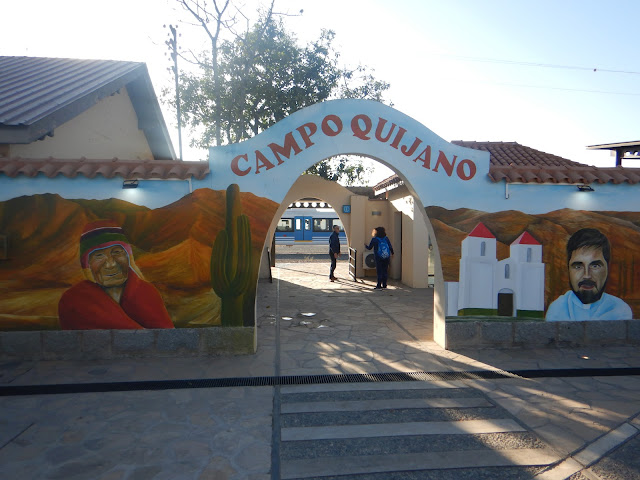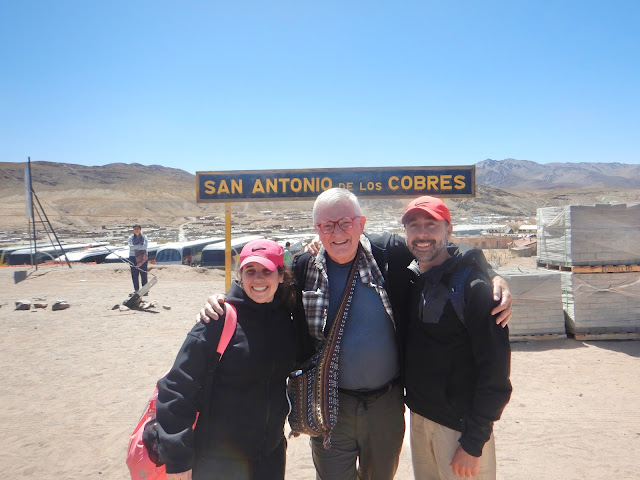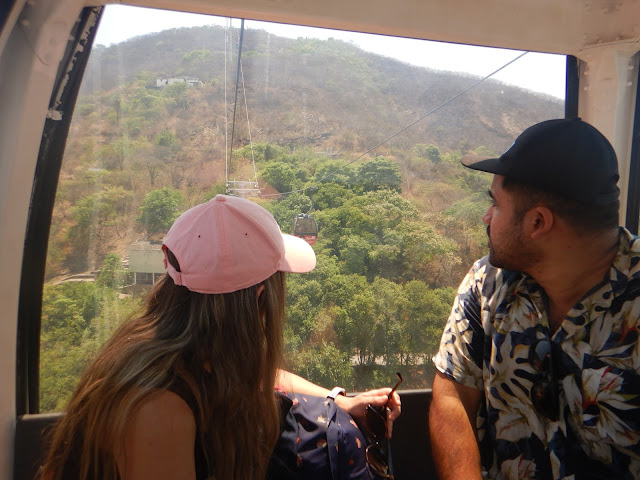I immediately knew I was going to enjoy my visit to Salta, as I walked along the tree-covered streets, beautiful plazas, and interesting colonial buildings that surrounded the plazas.
I arrived Sunday morning so many restaurants were closed, but I found the Cafe Martinez adjacent to the Plaza 9 de Julio was open and served me up a Millennials’ special—avocado on toast with scrambled eggs along with coffee and OJ. As it turns out this would be one of the more popular places that I enjoyed visiting. It was ringed with historical buildings and museums not to mention great places to eat and people watch.
Since I have to pay my Hostel bill with cash I had to hit up an ATM machine rather than go to Western Union since it was Sunday and the Western Union office was closed until Monday.
Although the Argentina government announced that they were going to honor the Blue rate on credit cards and debit cards beginning November 4, that was not to be at this ATM machine I used which gave me a rate of 160.33 pesos to the USD instead of the 304.75 pesos to the USD blue rate.
On Monday when I went to the Western Union office, I thought that I could just give them my ATM card and they would give me pesos. Instead, I had to load an application on my cell phone and then instruct disbursement to myself in Argentina. It really worked much easier than it seems.
Western Union charges about nine dollars for a $200 transaction, but since I’m using my Schwab debit card, Schwab reimburses me for any foreign exchange or bank fees. On Monday the Blue rate for this transaction was 304.75 per USD. Six days later the blue rate was 322.55 pesos per USD—a 6% increase in just 6 days—talk about rampant inflation.
I enjoyed the numerous cobbled walking streets near the plaza and saw that the city employed an army of street sweepers along with merchants and residents who washed and scrubbed their sidewalks as well. There is a big police presence as well in the downtown area.
Police Headquarters Castle
On Tuesday, I took the historic “Tren a las Nubes” or Train to the Clouds. I was surprised to see that instead of taking off from the downtown train station, I ended up taking one of 8 buses to the start of the train some 4 hours' distance to San Antonio de Los Cobres. This town was mostly an Army outpost and mining town.
On the way there, the buses stopped at Campo Quijano for a bathroom break and to shop for trinkets and food. We were entertained by this indigenous dancer who was angling for pesos. We continued on and made a couple of photo stops of the scenery and high train trestle.
When the buses arrived at San Antonio de Los Cobres we quickly found our train carriage and assigned seats. Almost all of the tourists were Argentinian. I suppose the COVID-19 lockdown made them realize should get out to see their country.
Nearby, there was a small hill with the Argentina flag on top. Once up there, they begin to sing Argentina's national anthem. It was pretty emotional for many. Also, the elevation here was about 13,845 feet—just under 600 feet lower than Mt.Rainier in Washington state. Emotional and breathless—that captures the moment.
When we reboarded the train for the return trip, I went to the dining car for a chicken and mashed vegetables lunch. On the way, I saw a young woman who was receiving oxygen from one of the many medics the train had employed.
During the trip, I talked to my seatmates facing me and those across the way. The couple across from me were Mariluz and Fernando who were from the Pampas area outside of Buenos Aires. The two couples on the other side of the train were from Corrientes, a city I had passed through on my way to Salta.
In my Spanglish, I told them where I was from, where I had traveled to during this trip, and where I was headed before returning home to Seattle. They all said this was the first time they come on the train trip. After Covid, they realized they wanted to see more of their country.
My Seat-mates — Mariluz and Fernando from the Pampas Area
On the way back, we stopped at a mining town called San Antonio de Puda named after the owner of the mines in the area. It was a pretty desolate town with a few restaurants open in the area along with a plaza adjacent to the church.
We took a short bathroom stop at another village with a museum and outside the museum, they had these “iron” rocks and when you banged them together, it sounded like you well ringing a brass bell—amazing.
Three hours later near 8 pm, the buses dropped us off at the downtown train station which was a short walk to the popular dining and entertainment area along Balcarce Street. The timing was perfect since most restaurants did not open until 8.
I had dinner at the La Caudua restaurant where they had musicians accompanying the Samba dancers. The steak was tender and medium rare just as I liked accompanied with mashed potatoes and sauces.
They were the most enjoyable dancers in this area so I returned a second night and enjoyed the grilled chicken breasts while again enjoying the dancers and musicians.
I visited several museums around the Plaza 9 Julio beginning with the Museo de Arqueologia de Alta Montana.
One girl was about 15 and the other boy and girl were about 7 years old. The seven-year-old girl was on display when I was there, and was nicknamed the “lightning girl” because her face was slightly deformed from a lightning strike while entombed. Everything about them was intact including their skin, braided hair, and decorative clothing. Included with them were tiny toy figurines—local vendors sell the lookalikes to tourists.
There was controversy over moving them to Salta, but in the end, they were moved to believe that if left where they were found, grave robbers would take them as was done with the fourth mummy on display, called “Reina del Cerro”.

This mummy was privately traded for years before the museum obtained it. This was the only mummy we were allowed to photograph because of its unknown provenance. It looked in pretty good shape, but it is unknown whether the clothing is original and what else may have been done to it to up the value.
The nearby Museo Historico del Norte is set in the old town hall—cabildo—and has quite a collection of pre-Colombian ceramics, religious art, portraits of Salta’s governors, and various types of old vehicles.
The Centro Cultural America building started as a church in 1721, and in 1913 it became the most important social club until the government took it over. It is now an arts and culture building that has rotating art exhibits.
The nearby Iglesia San Francisco was clothed in striking magenta and yellow colors along with a steep spire.
A visit to Salta would be incomplete if I did not take the gondola ride to the top of Cerro San Bernardo where the views were spectacular as were the beautifully landscaped grounds complete with a vast assortment of waterfalls.
On the way down I rode with a Mennonite couple and their teenage son. I could tell they were Mennonites from the German they spoke. The men wore crisp checkered shirts and new Oshkosh overalls. The woman wore a black patterned dress and hat. When they told me they were visiting from Bolivia, I told them about my niece, Krista, and her husband, Aaron, who had worked for the Mennonite Central Committee near Saipina, Bolivia, but that she had died in a bus crash there. Following that, the people of Saipina named their library “Krista Ausland Biblioteca” in her honor for how she had empowered the women in the area in her short time there. In our mix of English, Spanish, and German, they indicated they would try to learn more. I told them our family was grateful for all of the Mennonite aid they administered to our family.
Following that, I took my last stroll along the many walking streets with all of the various shops selling high-end goods and discount items.
While I was having lunch, the plaza exploded with a 24-hour strike of medical workers who were protesting low wages and a lack of respect. I have never been to South America when I have not run into a strike. It is their normal way of life.
On the way to the bus station, I stopped at a local restaurant for a filling meal of chicken slathered in mushroom sauce.
Subscribe to my YouTube Channel
I have recently uploaded all of my travel videos to YouTube now that they allow longer uploads. I have also added other travel videos that are shorter.
That link is https://www.youtube.com/c/huntforgold
If you do go there, please subscribe to my video channel since it will help me eventually get some income there and help with my future travels.



















































No comments:
Post a Comment